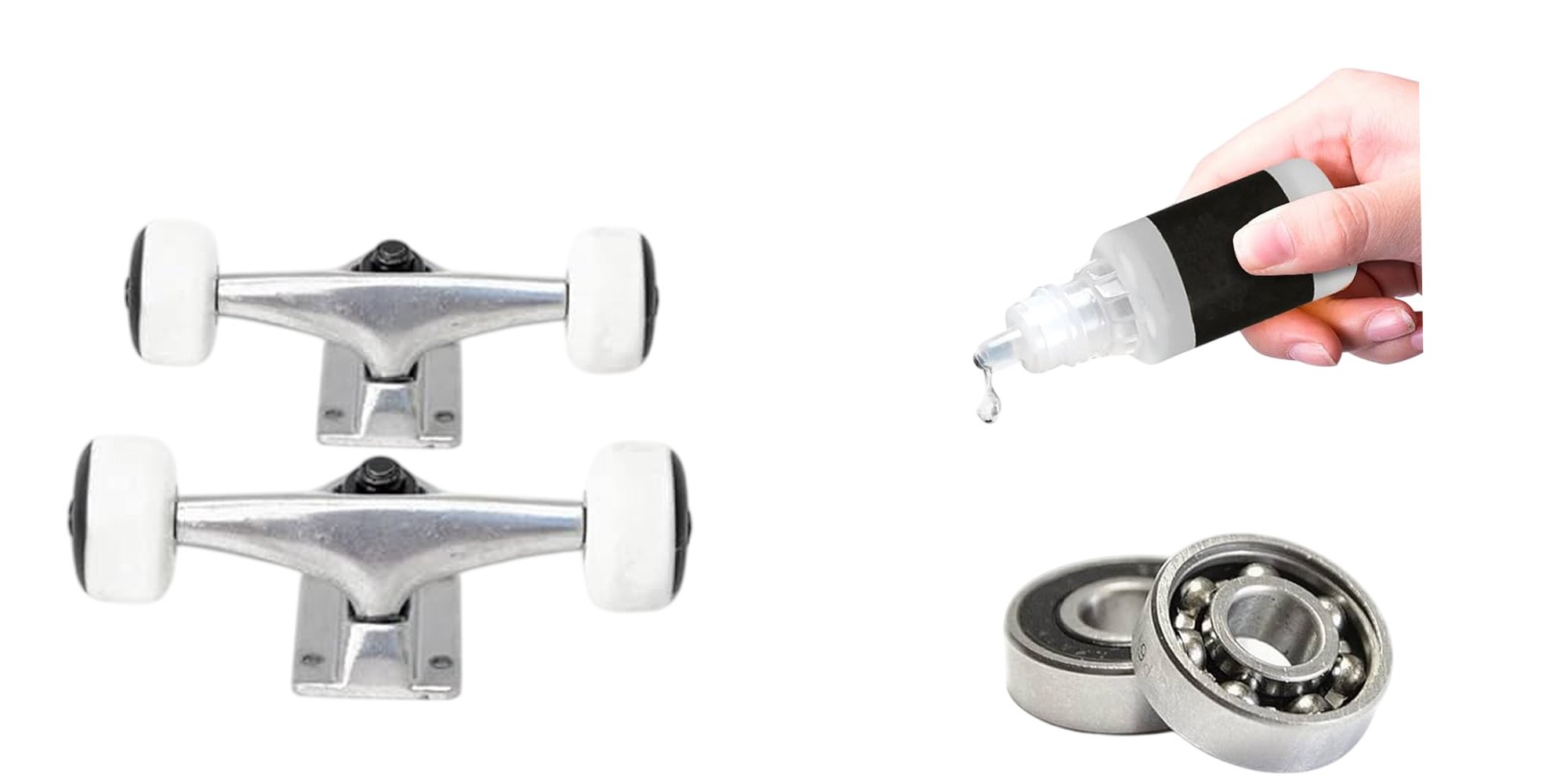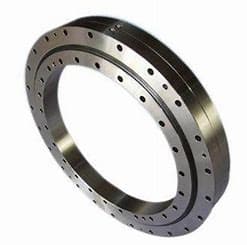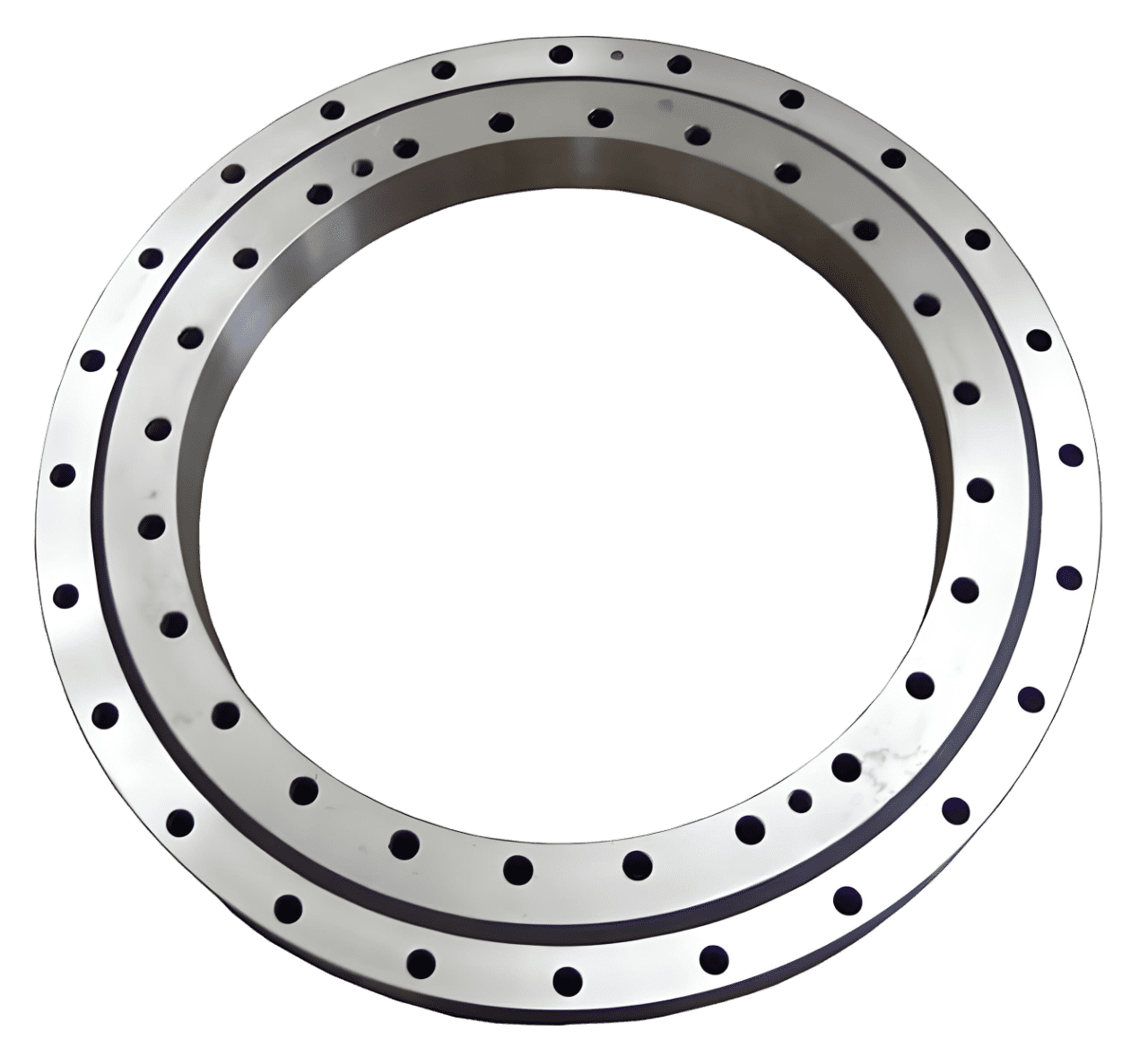How to Clean Ceramic Bearings?
Curious about maintaining ceramic bearings? Questions like “What makes ceramic bearings better?”, "What can I use to clean ceramic bearings?" or...

Grease skateboard bearings is crucial for maintaining smooth performance and prolonging the life of the bearings.
Proper bearing lubrication reduces friction, allowing the wheels to spin more freely and quietly.
This blog will provide skateboarders with practical advice and essential tips on properly greasing their bearings.

Do you know what are the standard skateboard bearings dimensions.
|
Type of Grease |
Description |
Why It’s Good for Skateboard Bearings |
|
Lightweight Lithium Grease |
Smooth consistency, works well in high-speed applications. |
Reduces friction while allowing free rotation, provides protection against dirt and moisture. |
|
Skate-Specific Bearing Grease |
Formulated specifically for skate bearings with a balance of lubrication and protection. |
Designed for high-speed spinning, resists dirt and water, and lasts longer without frequent reapplication. |
|
Heavy-Duty Grease |
Thicker grease often used in machinery under high stress. |
Provides protection in harsh conditions but may slow down bearings because its thickness. |
To remove skateboard wheels and bearings, use a skate tool or wrench to unscrew each axle nut counterclockwise, then set the nuts aside.
Carefully slide the wheels off, keeping any washers safe.
To pop out the bearings, place the wheel's edge on the axle and tilt it to pry each bearing out.
To carefully remove the bearing shields without causing damage, take a thin razor blade or pin.
Carefully insert it beneath the shield's edge and slowly pry it up to remove.
Work slowly around the shield’s perimeter, lifting it slightly as you go.
Avoid prying too forcefully; instead, ease the shield out by gradually applying pressure around the entire edge.
This technique minimizes bending or warping, ensuring the shield remains intact for reinstallation.
To clean your bearings, place them in a container.
Fill the container with isopropyl alcohol or acetone until the bearings are fully submerged.
Allow the bearings to soak in the solution for several minutes to loosen dirt and debris.
Then, gently swirl the container to help loosen the dirt and grime.
If needed, use a soft brush to remove stubborn debris. Take them out and let them air-dry completely before adding lubricant and reinstalling.
To dry your bearings, take them out of the solvent and pat them with a clean rag.
Use compressed air to blow out any remaining moisture, being careful not to spin the bearings too fast.
Finally, let them air-dry completely before adding lubricant.
To apply grease to each bearing, use a small amount—about the size of a pea or less for each one.
Apply it sparingly to avoid excess buildup, which can attract dirt and slow down the bearing.
Spread the grease evenly around the balls inside the bearing using a clean, small tool (like a toothpick or pin).
Rotate the bearing gently to work the grease into all areas, ensuring smooth movement without adding too much.
This way, the bearing stays well-lubricated without any sticky buildup.
To replace the shields, carefully align each shield over the open side of the bearing and gently press it back into place until it snaps securely.
Once the shields are on, position the bearing over the wheel's bearing seat and press it in.
For a snug fit, press the bearing into the wheel firmly with your hand.
Alternatively, place the bearing on the truck axle, then press the wheel onto it and push down until the bearing is fully seated.
Repeat the process on the other side of the wheel, then securely reattach the wheels to your skateboard.
After greasing the bearings and reassembling the wheels, spin each wheel by hand to spread the grease evenly.
Keep spinning until the wheels move smoothly without any resistance or wobbling.
This ensures the bearings are properly lubricated and run well.
Too much grease can create extra friction inside the bearing, leading to increased resistance as the parts try to move.
This excess buildup can slow down the bearings, making them less efficient. It also attracts dirt and debris, which can further slow the bearings and cause them to wear out faster.
Applying the right amount of grease ensures that the bearings move smoothly. It also prevents buildup, keeping the bearings running efficiently.
WD-40 and motor oil are not ideal for skateboard bearings because they do not provide proper lubrication.
Additionally, they tend to attract dirt, which can damage the bearings and reduce their performance.
WD-40 is more of a cleaner, not a lubricant, and motor oil is too thick, which can cause friction and wear.
Using a proper bearing lubricant designed specifically for skateboard bearings helps ensure smooth movement and long-lasting performance.
Cleaning bearings before greasing is essential to remove dirt, dust, and old lubricant.
If left inside, these contaminants can mix with the new grease, increasing friction and reducing the bearing's performance.
Contaminants can also cause the bearings to wear out faster and affect their smooth movement.
By thoroughly cleaning the skateboard bearings first, you remove any debris that could interfere with their performance.
This ensures that the grease can work effectively, allowing the bearings to function smoothly and at their best.
|
Condition |
Greasing Timeline |
Notes |
|
Clean, dry conditions (regular use) |
Every 5 to 10 sessions |
Helps maintain smooth rotation and prevents wear. |
|
Wet or dirty conditions |
Immediately after use |
Clean and grease to prevent rust and debris buildup. |
|
Infrequent skating |
Every 2-3 months |
Inspect the bearings and apply grease if necessary. |
|
Signs of poor performance |
As soon as sluggish or noisy bearings are noticed |
Grease or clean bearings to restore performance. |
Properly greased bearings reduce friction. This allows the balls to roll smoothly inside the bearing, instead of grinding against the raceways.
This reduces resistance, making the wheels spin faster and with less effort, resulting in a smoother and quicker ride.
When you properly lubricate the bearings, they perform efficiently and last longer.
Insufficient or excess grease can increase friction, slowing down the ride and causing wear.
Proper lubrication ensures optimal performance and speed.
regular maintenance and greasing of skateboard bearings not only improve their performance but also significantly extend their lifespan.
This proactive approach can save money by reducing the need for replacements, making it a cost-effective practice for skateboarders who want their gear to last longer.
Regular maintenance and greasing can help skateboard bearings last longer, saving you money in the long run.
By keeping the bearings lubricated, you reduce friction and prevent rust or dirt buildup, which can cause the bearings to wear out faster.
Regular care, such as cleaning and greasing after every few sessions or in harsh conditions, ensures smooth performance.
It also helps avoid the need for frequent replacements. This proactive approach keeps your bearings in good shape, extending their life.
Ultimately, it saves you from the cost and hassle of replacing them often.
For skateboard bearings, it's best to use a lightweight lithium grease or a skate-specific bearing grease.
No, it is not a lubricant and can break down the bearing grease, causing wear and poor performance. WD-40 is a thin lubricant that attracts dirt, which can potentially damage the bearings.
For most riders, greasing every 2-4 weeks or after 10-15 sessions is a good rule of thumb
Yes, it is necessary to clean your bearings before greasing them.
Regularly cleaning and greasing your skateboard bearings reduces friction and keeps them protected from dirt and rust. This also saves money by helping you avoid frequent replacements.
If you have any questions, you can contact lily bearing.

Curious about maintaining ceramic bearings? Questions like “What makes ceramic bearings better?”, "What can I use to clean ceramic bearings?" or...

Every vehicle depends on crucial components for seamless operation.Ball bearings on a car, especially wheel bearings, are paramount among these,...

Bearings are crucial components in mechanical equipment, with precision, performance, and reliability determining the mainframe's output. The quality...